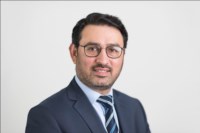Knee cartilage transplant procedure

Articular cartilage transplant is a surgical approach with the goal of restoring damaged knee cartilage. Cartilage can be damaged through a variety of ways, by an acute injury or blow to the knee, by accumulation of microdamages through time, due to hormonal or metabolic disorders or genetic predisposition, with the use of improper or too big training loads, etc. It should be emphasized that cartilage damage is irreversible, ie. cartilage can not repair itself once it is damaged.
There can be either an autograft or allograft transplant procedure depending on the cartilage damage. With the autograft procedure the surgeon transplants the healthy cartilage tissue healthy cartilage is taken and then inserted to the damaged cartilage. This approach is used with smaller cartilage damage because only a limited amount of healthy cartilage can be taken for the transplant. If the cartilage damage is bigger, then it is more likely that the allograft method from a cadaver will be used. The allograft can be bigger and molded specifically to fit the damaged area. The goal of both transplant approaches is to slow down and prevent further cartilage, bone and knee joint capsule damage, arthritis development and enable longer knee functionality. Not all patients are eligible for this procedure, candidates with small lesions are likely to have better postsurgery results that those with bigger cartilage damage or more problems in the same leg.
Rehabilitation is quite long because after the surgery, the leg should be rested and no weight should be put on it to let the cartilage growth and development to happen. Special attention should be given to knee flexion development, ie. it should be regained very carefully and gradually, because during knee flexion cartilage gets compressed in between bones which leads to friction and that is exactly what we want to prevent in the acute phase of therapy. In the acute phase we use RICE method (rest, ice compression, elevation) to reduce swelling and pain and later in the functional phase knee range of motion should be restored fully as well as upper leg muscle strength and knee stability in order to ensure full functionality of the joint. It should be emphasized that these strength and stability exercises should done even after rehabilitation is over to slow down further joint and cartilage degeneration and prolong knee functionality.
Umer Butt, MD, MRCS (UK), FRCS T&O (UK), Senior Consultant Orthopaedic Surgeon
Rehabilitation program author

Dr Butt is a full time Senior Consultant Orthopaedic Surgeon Specialist in Knee/Shoulder Sports Injury, Arthroscopy and Arthroplasty Circle Bath Hospital UK AO Clinic Centre for Orthopaedic, Trauma and Sports Injury Karachi
Go to profile- Program short URL: https://www.videoreha.com/11742
Duration
80 days
Program duration is 80 days. If you start today on 20.05.2025., the completion of the rehabilitation program will be on 08.08.2025.
Price
US $40.00
Total price is US $40.00 or US $0.50 per program day


